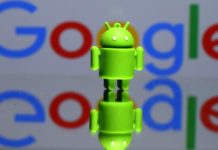Tesla that crashed into police car was in ‘autopilot’ mode, California official says
Olivia Solon
If confirmed, it would be the third time a Tesla in autopilot has crashed into a stationary emergency vehicle this year.
in Laguna Beach, California, leaving the driver injured and the patrol vehicle “totalled”, according to an official.
Sgt Jim Cota, the public information officer for the Laguna Beach police department, tweeted photos of the accident, which was reported at 11.07am on Tuesday. The driver of the Tesla, who suffered minor lacerations to the face from his glasses, told police officers the Tesla was in the semi-autonomous mode, although further investigation is needed to confirm this.
This morning a Tesla sedan driving outbound Laguna Canyon Road in “autopilot” collides with a parked @LagunaBeachPD unit. Officer was not in the unit at the time of the crash and minor injuries were sustained to the Tesla driver. #lagunabeach #police #tesla pic.twitter.com/7sAs8VgVQ3
— Laguna Beach PD PIO (@LBPD_PIO_45) May 29, 2018
Cota told the Guardian that the Tesla sedan’s front end was “pretty beat up” and that the police SUV was a “complete total loss”.
He said: “It was mangled up pretty good. It took out the whole back end and halfway through the centre part of the vehicle. There’s axle damage. It wouldn’t be worth repairing.”
If confirmed, the incident will mark at least the third time a Tesla in autopilot has crashed into a stationary emergency vehicle since January. This month, a Tesla Model S crashed into a stopped firetruck in Utah, echoing a similar incident in January, when the same model collided with a stopped firetruck on the 405 freeway in Los Angeles county.
While working a freeway accident this morning, Engine 42 was struck by a #Tesla traveling at 65 mph. The driver reports the vehicle was on autopilot. Amazingly there were no injuries! Please stay alert while driving! #abc7eyewitness #ktla #CulverCity #distracteddriving pic.twitter.com/RgEmd43tNe
— Culver City Firefighters (@CC_Firefighters) January 22, 2018










